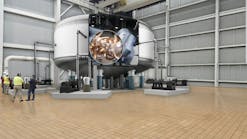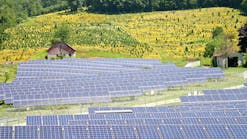ENGIE installing $41 million Solar-Storage Microgrid project to cover County’s Energy goals
California’s Solano County has collaborated with ENGIE North America, a renewable energy services firm, to break ground on a $41 million energy infrastructure upgrade program to boost sustainability.
The new energy infrastructure includes four microgrids, 3.4 MW of solar and 1.9 MW / 7.6 MWh of battery energy storage with microgrid controls. It includes emergency generators, LED lighting retrofits, HVAC equipment replacements and 54 Level 2 EV charging ports at six locations.
Power generated from the installation will cover almost 90% of Solano County’s energy requirements at the locations where the installations are made. The program will offset over $60 million in utility bills over 20 years and the cost savings will be used for infrastructure upgrades.
"The County pays nearly three million a year in utility costs," says Megan Greve, Director of General Services for the County. "That is for the entire county and not just the project sites. This program with ENGIE will offset about $2 million of that."
"Solano County currently relies heavily on the power grid, and our rates went up eight percent this year," added Greve. "This new program figured in annual increases of 4.5 percent as part of its savings calculations, so the benefits could be even greater than anticipated."
ENGIE will be responsible for installation, maintenance and limited replacement projects.
"ENGIE anticipates a long alliance with Solano County, as our contract includes 20 years of operations and maintenance, with a 20-year savings guarantee provided by our Customer Care team," explained Stefaan Sercu Managing Director, ENGIE. "This means that if the new infrastructure's power generation doesn't meet certain targets, ENGIE will pay the County back."
EnergyTech's full Mission Critical Microgrid coverage here
The project will ensure continuity of service at important county facilities during a power outage, particularly during wildfires. It will also reduce the county’s carbon footprint, eliminating over 5 million tons of GHG emissions. County residents will have access to streaming project data, STEAM activities and a citizen science project. It will bring in a CivicSpark Fellow to the county to evaluate the organic waste disposal needs and capacity of the county.
Located in Northern California, Solano County is the easternmost county in the seven-county San Francisco Bay Area, and comprises 822 square miles of land. It has a population of about 447,000, with its county seat in Fairfield.





